Pop Videos, Films and TV programs all use images to put over meanings. These meanings can be used and conveyed in different ways to try and create a certain impression amoungst the audience. Kulshov say's that 70% of the meaning in film is through the images that are shown. For example if their is a high angle shot of someone so the camera is looking down on them, then this would suggest to the audience that they are being looked down on. There is a language of flim making that flim makers follow to put over a meaning. These are known as composition rules and there are over 200 of them. In this blog I explain 8 of these composition rules.
1. Different type of shot size
The different type of shot sizes include extreme close up, the big close up, the close up, the medium close up, the mid shot, the medium long shot, the long shot and the extreme long shot.
We use the extreme close up to make the audience more involved with the sequence and bring them in closer to the action. It is also used to shock the viewer and they can bring a new perspective to the story.
The big close up is the equivalent to staring someone in the eyes.
The close up delivers emotion from people and impact from objects.
The medium close up shows a shot of a person so you can see their shoulders and head in the shot. It is known as the ‘talking head’.
The mid shot shows more of the scenery around the subject however it is still close enough so that you can see their facial expressions and bodily gestures.
The big close up is the equivalent to staring someone in the eyes.
The close up delivers emotion from people and impact from objects.
The medium close up shows a shot of a person so you can see their shoulders and head in the shot. It is known as the ‘talking head’.
The mid shot shows more of the scenery around the subject however it is still close enough so that you can see their facial expressions and bodily gestures.
The medium long shot is good for showing the character and the location. This shot comes into use if you need someone walking through a door or is on the move.
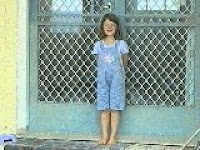
The long shot introduces people at full length and creates a sense of place, time and atmosphere; showing interior or exte4rior or exterior, day or night.
The extreme long shot gives a clear picture of the landscape so the audience know exactly where the event is taking place of where something is located. It gives the audience the feel of the atmosphere although small details will be harder to show.
2. Camera Position and Angle.
Different camera angles and positions are used to give the audience a different point of view on certain events that happen throughout a film.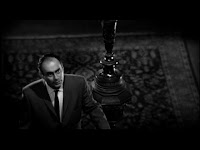

The long shot introduces people at full length and creates a sense of place, time and atmosphere; showing interior or exte4rior or exterior, day or night.
The extreme long shot gives a clear picture of the landscape so the audience know exactly where the event is taking place of where something is located. It gives the audience the feel of the atmosphere although small details will be harder to show.
2. Camera Position and Angle.
Different camera angles and positions are used to give the audience a different point of view on certain events that happen throughout a film.

A high angle shot may be used to look down on someone making them seem small and the audience bigger. If it is a point of view shot then this will be the case for the bigger person. If a low angle shot is used then this looks up to the subject, therefore portraying them in more heroic way. Film makers stick to a 180 degree rule so that there is standard continuity among their shots as well. The significance of the shot is also determined by the size of the characters in the mise en scene. For example if the shot is a close up of a man’s face, then the most important thing happening is his facial expression. 

3.Camera Movements
An example of this would be tracking and crane movements. Crane movements are when a camera is place on a crane and then the scene is shot from a high angle and the camera can be controlled easily. A tracking shot is when a camera is placed on a track so that the camera can either move from left of right but keep the same perspective. This is helpful if you are shooting along side someone who is walking. Tracking also allows shots that are too wide to be covered in one shot to be covered by moving the camera at a steady pace.
An example of this would be tracking and crane movements. Crane movements are when a camera is place on a crane and then the scene is shot from a high angle and the camera can be controlled easily. A tracking shot is when a camera is placed on a track so that the camera can either move from left of right but keep the same perspective. This is helpful if you are shooting along side someone who is walking. Tracking also allows shots that are too wide to be covered in one shot to be covered by moving the camera at a steady pace.
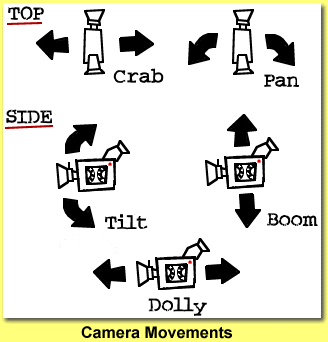
4.Rule of Thirds
The rule of thirds is where the shot is divided up into different sections. Depending on the importance of the object depends where it is in the shot. For example something of high importance would be located at the top left hand of the shot as we sub-consciously read the screen like we would a book and this is the first point that we look at and examine. Film makers also use the screen on the basis that it is a XY axis. If someone was to walk from the left and side of the shot on the x axis then this would infer that this subject was good or the hero of the film. If someone was to walk from the right hand side of the x axis then this would infer someone bad as they are walking against the direction that our eyes read the screen.
 Breaking these rules can be done on purpose to put over a particular meaning to the audience as well. By using these specific rules this helps create a balanced and professional looking picture.
Breaking these rules can be done on purpose to put over a particular meaning to the audience as well. By using these specific rules this helps create a balanced and professional looking picture.
The rule of thirds is where the shot is divided up into different sections. Depending on the importance of the object depends where it is in the shot. For example something of high importance would be located at the top left hand of the shot as we sub-consciously read the screen like we would a book and this is the first point that we look at and examine. Film makers also use the screen on the basis that it is a XY axis. If someone was to walk from the left and side of the shot on the x axis then this would infer that this subject was good or the hero of the film. If someone was to walk from the right hand side of the x axis then this would infer someone bad as they are walking against the direction that our eyes read the screen.
 Breaking these rules can be done on purpose to put over a particular meaning to the audience as well. By using these specific rules this helps create a balanced and professional looking picture.
Breaking these rules can be done on purpose to put over a particular meaning to the audience as well. By using these specific rules this helps create a balanced and professional looking picture. 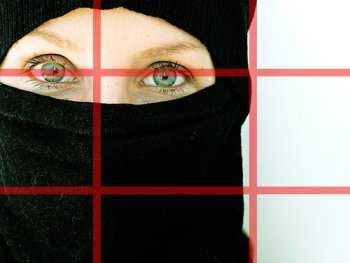
5. Leading the Eye
Leading the eye can be used to put over a meaning to the audience. If the camera is following a subject through somewhere, then the eye tends to focus on that point. If someone walks from left to right this normally means they are good according to the x y axis rule, however if they walk from right to left then they tend to be bad as they are walking againgt the flow of the eye.
Leading the eye can be used to put over a meaning to the audience. If the camera is following a subject through somewhere, then the eye tends to focus on that point. If someone walks from left to right this normally means they are good according to the x y axis rule, however if they walk from right to left then they tend to be bad as they are walking againgt the flow of the eye.
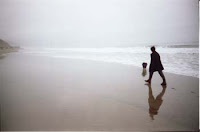
6. Colours
The colours of a set are very important for setting the mood for the scene. Both the foreground and the background colours are very important for how the audience perceive the picture. Different colour can bring out different emotions and qualities within the mise en scene. For example the colour red will show personality as outgoing, active and physical. The positive qualities of red are motivating, warm and caring however the negative qualities are that its irritable and angry. The colour white on the other hand brings out masculine energy in its personality, purity and cleansing in its positive qualities and cold and isolating in its negative qualities. So if a director was trying to create hell in his film then, he would probably make the background red as it is irritable and angry. In the film ‘The Wild Bunch’ the movie is shot with a filter that creates a dingy effect. A way of creating this effect is to put a pair of women’s tights over the lens of the camera that it creates what is known as a ‘poor mans filter’.
The colours of a set are very important for setting the mood for the scene. Both the foreground and the background colours are very important for how the audience perceive the picture. Different colour can bring out different emotions and qualities within the mise en scene. For example the colour red will show personality as outgoing, active and physical. The positive qualities of red are motivating, warm and caring however the negative qualities are that its irritable and angry. The colour white on the other hand brings out masculine energy in its personality, purity and cleansing in its positive qualities and cold and isolating in its negative qualities. So if a director was trying to create hell in his film then, he would probably make the background red as it is irritable and angry. In the film ‘The Wild Bunch’ the movie is shot with a filter that creates a dingy effect. A way of creating this effect is to put a pair of women’s tights over the lens of the camera that it creates what is known as a ‘poor mans filter’.

7. Editing Styles
Editing can be used in different ways to create different effects. For example if you increase the speed of editing then this increases intensity. This would be used in something like a car chase or a fight scene. The film ‘The Wild Bunch’ uses what is known as balletic editing. For example they get a shot of someone being shot of a roof top, while he is falling the mise en scene quickly rotates through another series of shot’s of people doing other things. The scene will then cut back to the man falling down still and this process continues until he hits the ground. Other editing styles include dissolving and fading.

Editing can be used in different ways to create different effects. For example if you increase the speed of editing then this increases intensity. This would be used in something like a car chase or a fight scene. The film ‘The Wild Bunch’ uses what is known as balletic editing. For example they get a shot of someone being shot of a roof top, while he is falling the mise en scene quickly rotates through another series of shot’s of people doing other things. The scene will then cut back to the man falling down still and this process continues until he hits the ground. Other editing styles include dissolving and fading.

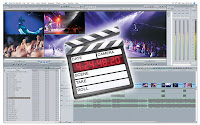
8. Shapes and Lines
The shapes and lines of a set can also help set the mood along with colours. To get a dangerous effect and to make the set look uninviting more uneven and jagged shapes will be used. For example Gotham city in Batman will be made to look like it is dangerous and run by criminals so the set design will be more uneven and jagged. To make a place or a set look more inviting then curvier and smoother objects will be used to create the set. This gives a safe and more inviting feel to it and makes the audience feel safe.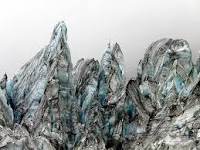
The shapes and lines of a set can also help set the mood along with colours. To get a dangerous effect and to make the set look uninviting more uneven and jagged shapes will be used. For example Gotham city in Batman will be made to look like it is dangerous and run by criminals so the set design will be more uneven and jagged. To make a place or a set look more inviting then curvier and smoother objects will be used to create the set. This gives a safe and more inviting feel to it and makes the audience feel safe.

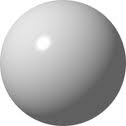


No comments:
Post a Comment